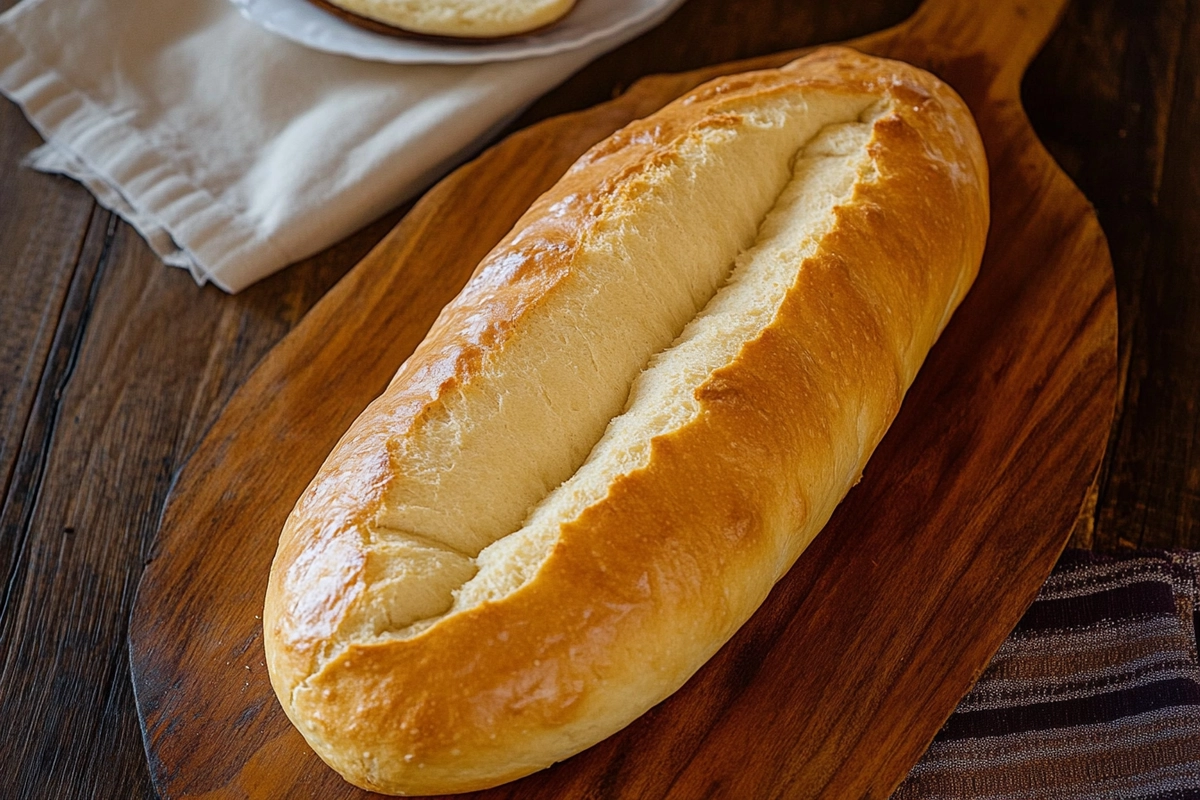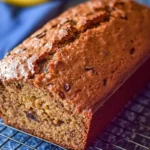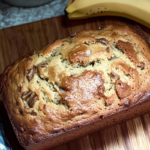Introduction
Ever wondered how to make a perfectly crispy yet soft and airy loaf of Cuban bread recipe at home? This easy-to-follow guide will walk you through the entire process, from selecting the right ingredients to achieving the ideal texture. You’ll also get expert tips, storage recommendations, serving ideas, and answers to frequently asked questions. Let’s dive into the world of homemade Cuban bread recipe and make baking easier than ever!
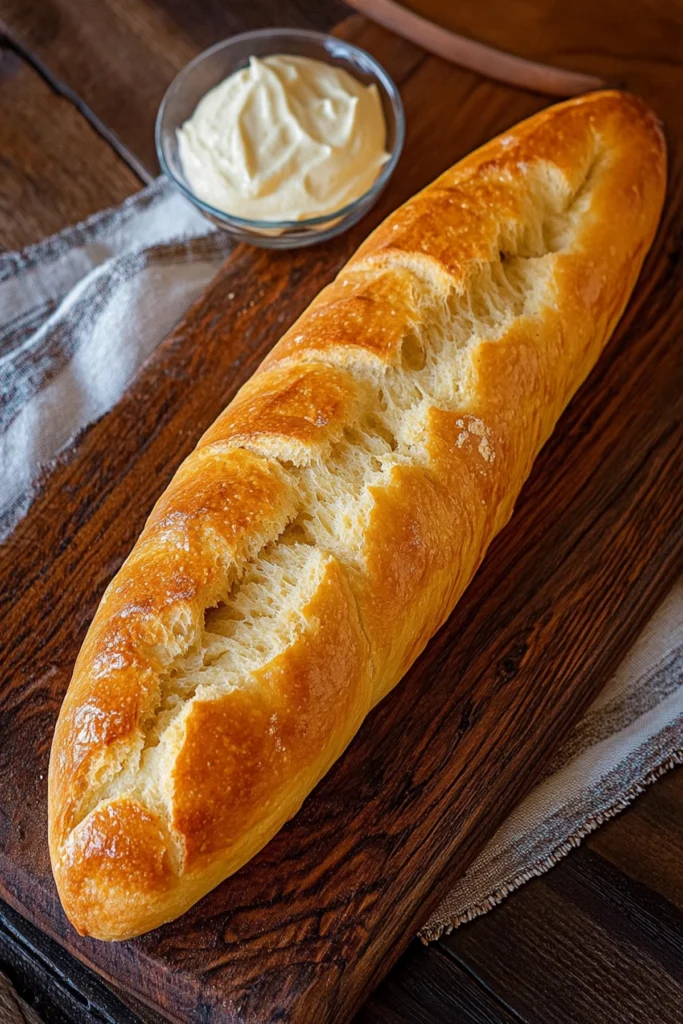
What Makes Cuban Bread Unique
Distinctive Ingredients
What makes Cuban bread recipe different from other breads? It’s all about the ingredients! The use of lard is the key. Unlike butter or vegetable oil, lard gives the bread its unique texture—light, fluffy, and slightly chewy on the inside while maintaining a thin, crispy crust.
But that’s not all! The ingredient list is simple, yet each component plays a crucial role:
- Bread flour – Helps create a strong dough structure for a chewy texture.
- Yeast – Essential for that airy, fluffy rise.
- Sugar – Feeds the yeast, speeding up fermentation.
- Salt – Enhances flavor and strengthens gluten.
- Lard – Provides tenderness and richness.
- Warm water – Activates the yeast and binds everything together.
These ingredients work together to create the signature softness and crispness of a Cuban bread recipe.
Texture and Crust
The hallmark of authentic Cuban bread recipe is its light, airy crumb and delicate crust. Unlike traditional baguettes, Cuban bread is not as dense. The inside is pillowy soft, making it perfect for sandwiches, toast, or just eating fresh out of the oven.
The outer crust is thin and golden, but not too hard. A perfectly baked loaf has a light crunch when you bite into it, giving way to the soft and slightly chewy interior.
One secret to achieving this? Steam during baking! A pan of hot water placed inside the oven creates steam, helping the bread form a delicate, crackly crust. That’s why bakeries often use specialized steam ovens to get that signature texture.
With the key ingredients and texture explained, the next step is gathering everything you need to make this iconic loaf. In the next section, we’ll cover the essential ingredients and their substitutes! Stay tuned.
Essential Ingredients for Cuban Bread
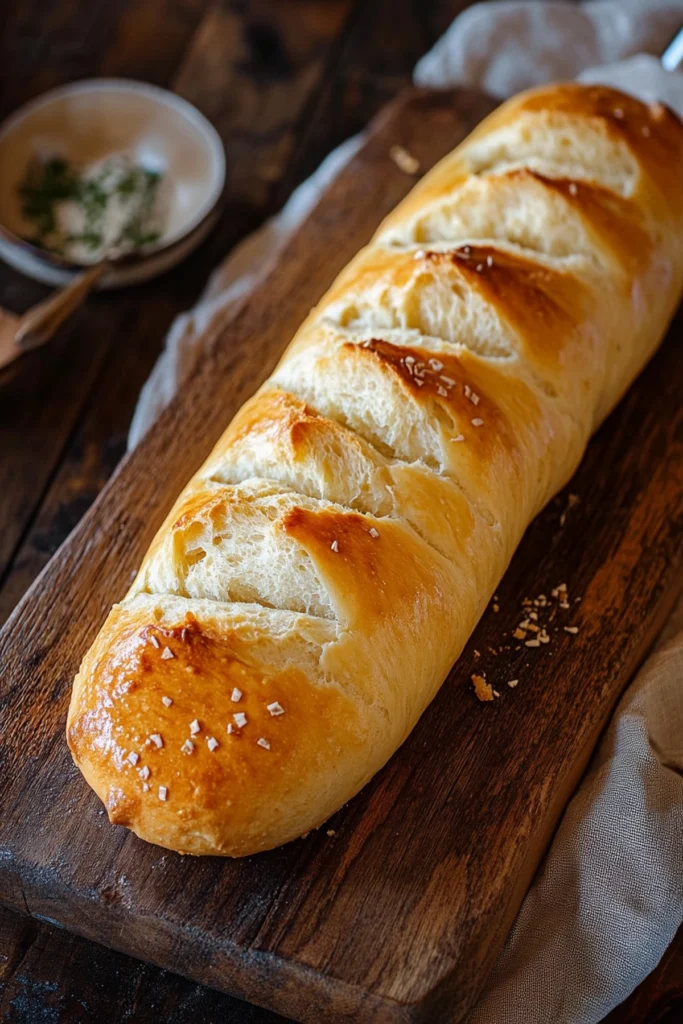
Ingredient List
Making a perfect Cuban bread recipe starts with selecting the right ingredients. Each one plays a vital role.
- Bread flour – Provides strength and structure for a slightly chewy yet tender crumb.
- Active dry yeast – Helps the dough rise, creating a light and airy texture.
- Warm water – Activates the yeast while helping bind ingredients into a smooth dough.
- Lard – Adds richness, softness, and an authentic Cuban bread flavor.
- Sugar – Feeds the yeast, accelerating fermentation and adding subtle sweetness.
- Salt – Enhances overall flavor and strengthens the gluten network.
Substitutions and Tips
Sometimes, you may need ingredient swaps for dietary reasons or convenience. Here are some suitable alternatives.
- All-purpose flour instead of bread flour – Works, but may result in a slightly softer loaf.
- Vegetable shortening instead of lard – Keeps the texture similar but lacks the same depth of flavor.
- Honey instead of sugar – Adds a mild sweetness with a slight flavor variation.
- Instant yeast instead of active dry yeast – Speeds up the rising process, but requires slight adjustments.
For best results, use fresh yeast since old yeast weakens, affecting the bread’s rise. Measure ingredients accurately, as incorrect proportions can lead to a dense loaf.
With all ingredients ready, it’s time to start making the dough! Next, we’ll cover the step-by-step process, ensuring success from start to finish.
Step-by-Step Guide to Making Cuban Bread
Preparing the Starter
A good Cuban bread recipe starts with a simple yeast starter. It helps improve flavor and texture.
- Dissolve yeast in warm water – In a bowl, combine warm water and yeast, letting it sit for 5 minutes.
- Add sugar and flour – Stir in a small amount of sugar and flour until fully combined.
- Let it rest – Allow the mixture to sit for 10 minutes, activating the yeast for better rising.
The starter should bubble slightly, indicating that the yeast is active. If nothing happens, restart with fresh yeast.
Making the Dough
Once the starter is ready, it’s time to mix and knead the dough properly.
- Mix dry ingredients – In a large bowl, combine bread flour, salt, and remaining sugar.
- Add lard – Cut lard into the dry ingredients, ensuring even distribution for a soft texture.
- Incorporate the starter – Pour the yeast mixture into the bowl, mixing until a sticky dough forms.
- Knead the dough – On a floured surface, knead the dough for 8 minutes until smooth and elastic.
- First rise – Place the dough in a greased bowl, covering it with a towel. Let it rise for 1 hour.
Shaping and Proofing
Shaping the dough properly ensures the bread bakes evenly while maintaining its signature texture.
- Divide and shape – Punch down the risen dough, then divide it into two equal portions.
- Roll into logs – Form each portion into a smooth log, about 12 inches long.
- Second rise – Place loaves on a baking sheet, covering them with a towel. Let them rise for 30 minutes.
For best results, place a damp towel over the dough while it rises. This prevents the surface from drying out.
Baking the Bread
Now, it’s time to bake the dough into golden, crispy loaves.
- Preheat the oven – Set it to 400°F, allowing it to heat fully before baking.
- Add steam – Place a pan of hot water inside the oven to create steam.
- Score the loaves – Using a sharp knife, make a shallow slash along the top of each loaf.
- Bake – Transfer the bread to the oven and bake for 20-25 minutes until golden brown.
Once the bread is done, let it cool slightly before slicing. Up next, we’ll explore the best ways to serve it!
Serving Suggestions
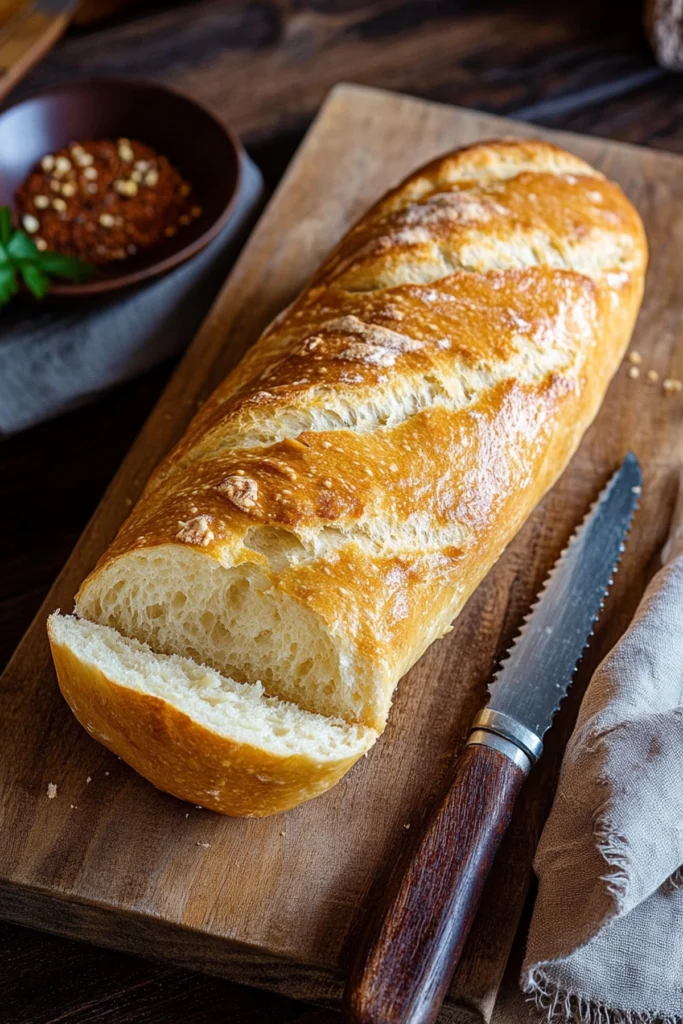
Classic Cuban Sandwich
A freshly baked Cuban bread recipe is perfect for making authentic Cuban sandwiches. The crispy crust holds fillings well.
- Slice the bread – Cut a loaf into 6-inch sections, then split each piece lengthwise.
- Layer ingredients – Add roasted pork, ham, Swiss cheese, and pickles between the bread slices.
- Spread mustard – Evenly spread yellow mustard across the bread for a tangy kick.
- Press and grill – Use a sandwich press or heavy pan to flatten and toast the sandwich until golden brown.
- Serve hot – Cut diagonally and enjoy the crispy, cheesy, and savory flavors in every bite.
This sandwich pairs well with plantain chips or black bean soup. However, Cuban bread is versatile beyond sandwiches.
Toast and Variations
Besides sandwiches, Cuban bread recipe is delicious toasted with simple toppings or used for breakfast.
- Butter and honey – Spread butter and drizzle honey over warm, toasted slices for a sweet treat.
- Garlic toast – Rub toasted bread with garlic and brush it with olive oil for a savory snack.
- Avocado spread – Mash ripe avocado with lime juice, salt, and chili flakes for a flavorful topping.
- French toast – Dip slices in an egg mixture, then pan-fry until golden brown and crisp.
- Soup pairing – Serve toasted slices with tomato soup or seafood chowder for a hearty meal.
With so many ways to enjoy it, Cuban bread never goes to waste. Up next, we’ll share expert tips to perfect every loaf!
Tips for Perfect Cuban Bread
Achieving the Right Texture
Getting the right texture in a Cuban bread recipe takes attention to detail and proper technique.
- Use bread flour – It provides the necessary gluten strength for a chewy yet airy crumb.
- Measure ingredients accurately – Even small variations can affect the final texture.
- Knead properly – Knead for at least 8 minutes to develop elasticity in the dough.
- Let the dough rise fully – Rushing proofing results in a dense loaf without the right softness.
- Slash the top – Scoring allows controlled expansion, preventing cracks and uneven baking.
- Steam the oven – A pan of hot water helps create a crispy yet delicate crust.
- Avoid overbaking – The crust should be golden but not overly hard or thick.
Mastering these steps ensures the bread turns out light, airy, and flavorful every time.
Storage Recommendations
Fresh Cuban bread recipe tastes best the same day, but proper storage keeps it soft longer.
- Wrap in a towel – Keeps the crust crisp while preventing excess drying.
- Use a paper bag – Allows airflow to maintain texture without making the bread too hard.
- Avoid plastic bags – Traps moisture, making the crust rubbery instead of crispy.
- Freeze for later – Wrap in foil, place in a freezer bag, and store for up to a month.
- Reheat properly – Warm in an oven at 350°F for 5 minutes to restore freshness.
Knowing how to store Cuban bread properly ensures it stays fresh and delicious. Next, we’ll tackle common questions bakers often ask!
Frequently Asked Questions
What is the purpose of lard in Cuban bread?
Lard is essential in a Cuban bread recipe because it enhances both flavor and texture.
- Creates tenderness – It shortens gluten strands, making the bread softer inside.
- Adds richness – Gives Cuban bread a subtle depth of flavor unmatched by vegetable oil.
- Improves crust – Helps achieve a crispy, golden-brown exterior without making it too hard.
- Enhances moisture – Prevents the bread from drying out too quickly after baking.
If lard isn’t available, vegetable shortening works, but it slightly changes the taste and texture.
Can I use all-purpose flour instead of bread flour?
Yes, but using all-purpose flour slightly alters the final bread’s texture.
- Less gluten – Results in a softer, less chewy loaf.
- Weaker structure – May not rise as high during proofing.
- Slightly denser crumb – The inside might not be as airy as with bread flour.
For best results, mix equal parts all-purpose and bread flour to improve gluten strength.
How should I store leftover Cuban bread?
Proper storage keeps Cuban bread recipe fresh without losing its signature crispness.
- Room temperature – Wrap in a clean towel or paper bag for up to 2 days.
- Freezing option – Slice the bread, wrap in foil, and store in a freezer bag for longer preservation.
- Reheating – Warm in the oven at 350°F for 5 minutes to restore texture.
Can I freeze Cuban bread dough for later baking?
Yes, freezing the dough is a great way to have fresh Cuban bread recipe anytime.
- After first rise – Shape the dough into loaves, wrap tightly, and freeze.
- Thaw properly – Leave in the refrigerator overnight, then let it come to room temperature.
- Final proofing – Allow a second rise before baking to ensure the right texture.
With these FAQs answered, you’re ready to confidently bake and store Cuban bread. Now, let’s wrap things up!
Conclusion
Baking a homemade Cuban bread recipe is easier than most people think. With simple ingredients and proper techniques, anyone can achieve bakery-quality results.
From kneading the dough correctly to steaming the oven for a perfect crust, every step matters. Using lard enhances the texture, while proofing ensures the ideal rise. Even if substitutes are used, the final bread remains delicious.
Serving options are endless, from classic Cuban sandwiches to warm, buttered toast with honey. Proper storage keeps the bread fresh, and freezing allows for easy future baking. With the right methods, Cuban bread stays soft and flavorful.
Now that you have all the details, it’s time to start baking! Experiment with variations, serve it in creative ways, and enjoy every bite. Whether making it for sandwiches, breakfast, or snacks, Cuban bread is always a crowd-pleaser.

